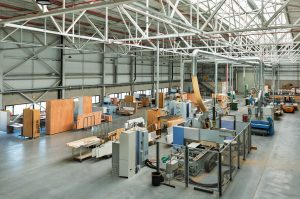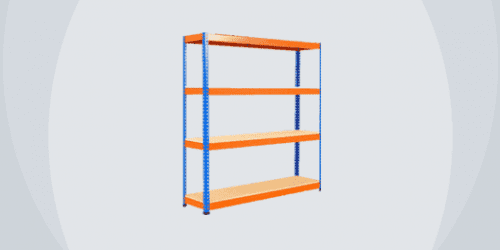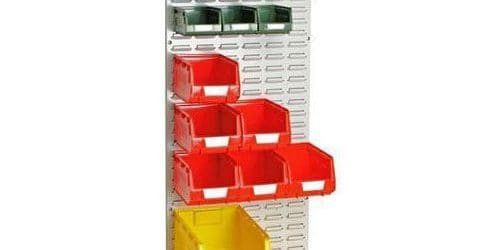How to improve efficiency in your warehouse

Warehouses in all sectors are constantly looking for ways to improve their business and its performance. To do so, it is essential to look at ways of improving processes so that they become as efficient as possible. Greater efficiency also means greater productivity. To optimise the operation of your warehouse, follow the 12 tips outlined in this article!
12 tips for more efficient warehouse management
Improve your employees’ productivity, reduce staff absences in your departments and increase efficiency in your warehouse!
1) Make productivity a priority
Whether you automate your logistics processes using robots or motivate your staff through incentives, optimising productivity should always be your top priority. And for good reason: Labour costs often represent the main expense item for all departments combined.
2) Make the most of every square inch
Maximise and optimise all available space. Rather than increasing the footprint of your warehouse, consider making better use of vertical space. Adding taller storage units and appropriate picking and storage equipment can help you store more in the same area rather than adding expansion costs.
Think about the type and variety of shelving used. Storing smaller items on pallet racks wastes space and makes it easy for products to get lost. Instead of using the same shelving throughout your warehouse, choose different types of shelving for different types of goods. Also, try to use standardised containers to keep the shelves neat and tidy.
You can view our complete range of shelving and racking on our website: manutan.co.uk/shelving
3) Pay attention to the organisation of your workstations
Staying in the same position for a long time and repeating the same movements can ultimately lead to the onset of aches and pains or potentially more serious issues such as MSDs (musculoskeletal disorders). To prevent this, it is important to design workstations so that they are suited to the employee and their task. By adjusting work surfaces to the right height, you can improve ergonomics and thereby increase productivity.
You can view our complete range of office furniture here: manutan.co.uk/office-furniture
4) Review your order picking methods
Is the method currently in place in your warehouse satisfactory? Is it the best it can be? What about the route that order pickers take to their work area? What works best for your orders and your staff? These are just some of the questions you need to ask yourself in order to judge the effectiveness of your methods.
5) Apply Lean philosophy
The effectiveness of the Lean philosophy in optimising business processes is well established. The resulting flow eliminates waste, which increases production performance and reduces costs. By working in a tidy place, for example, employees become more efficient and have better control over their operations.
6) Use the latest techniques
How can you use innovations to stay ahead of the competition? The most up-to-date techniques ensure smarter industrial environments, where people work more efficiently.
7) Make sure everything is close at hand
Being able to find products and tools quickly also increases productivity. The Kanban method is an effective solution for all workshops and warehouses. It makes it easier to keep your inventory organised and updated, so you don’t run out of certain products.
8) Engage in the continuous improvement of processes
Keep an eye on the changing needs of your warehouse and your customers. Don’t just look at the short term, but set goals for long-term improvement as well. Finally, with your team, start a project aimed at improving processes, taking advantage of the proven Scrum technique.
9) Opt for a lean inventory
Adopting a lean inventory is an asset for your warehouse management. The core principle of lean management is to take only what you need and nothing more. Reduce or even eliminate your contingency stocks and try to get your suppliers to deliver in smaller quantities, but more frequently.
10) Adopt enabling technology
A warehouse management software (WMS) or an ERP system with a powerful WMS module can improve efficiency by suggesting the best routes and methods for picking or putting away goods.
These tools also provide automated pick lists, which can be sent to readers and mobile devices to eliminate errors and reduce time and paper waste. Your warehouse will be cleaner and more environmentally friendly.
The use of barcode or radio frequency identification (RFID) readers can improve transaction accuracy and reduce the number of picking errors. Indeed, research conducted by the University of Arkansas has shown that the use of RFIDs increases inventory management accuracy by 27% in just 13 weeks.
11) Organise workstations
Careful organisation of workstations improves productivity, as employees don’t have to search for tools or equipment. Use the 5S method to make sure your workstations are as well organised as possible. Derived from Lean Management, this method consists of:
- Sorting;
- Putting in order;
- Ensuring cleanliness;
- Standardising the rules;
- Keeping the system in place.
All these techniques are designed to avoid clutter, reduce errors and improve safety and organisation.
12) Optimise work efficiency
If your WMS does not generate efficient order picking plans, create them manually. Analyse your material usage patterns and store bulky items together at the front of the warehouse to reduce travel time.
Likewise, store items that are frequently sold together next to each other. Placing the most frequently picked goods in an accessible location helps eliminate picking times and streamline operations.
Efficient warehouse management is essential to ensure customer satisfaction, as it helps to meet their main expectations: Rapid dispatch and reception of their orders.





